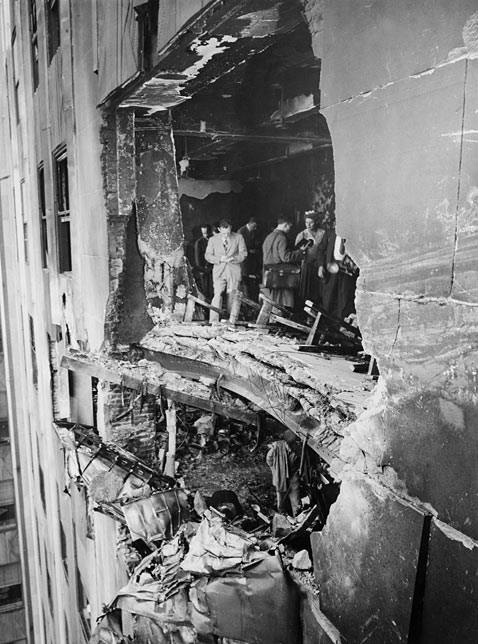
Sometimes truth is stranger than fiction. From technological accidents to natural disasters, with tragedy mixed in, here we have some of the notable “architectural” accidents throughout history. As investigators search for answers on the Sunday fire that destroyed the interior of the Serbian Orthodox Church of St Salva, formerly Trinity Chapel, we present accidents lost to time that shocked the city’s residents.
One note: though there have certainly been more deadly incidents, like the General Slocum shipwreck or 9/11, we have stuck here to non-deliberate accidents and those of interesting architectural nature.
1. Empire State Building Plane Crash, 1945
On a foggy morning in July 1945, an experienced and decorated World War II pilot was flying a B-25 Mitchell Bomber from the Army base in Bedford, Massachusetts to Newark, New Jersey on a mission to return a few servicemen home. Approaching the airport, pilot William Franklin Smith Jr. prepared for landing despite warnings of low visibility. He was able to get through most of the Manhattan skyline, but made a wrong turn and hit the 79th floor of the Empire State Building.
The crash created a hole on the side of the skyscraper 18 feet wide and 20 feet high. The fuel tank exploded, hurling flames through the stairs and the hallways down to the 75th floor, killing 14 and injuring 26. All three on the plane were killed along with 11 people in the Empire State Building, mostly women from the National Catholic Welfare Conference. The building was repaired at a cost of $1 million.
It was a sad end for Smith Jr., who during World War II had been awarded the “Air Medal, the Distinguished Flying Cross and the Croix de Guerre as a member of the 457th Bomb Group,” Time reports.
2. Park Slope Plane Crash, 1960

On December 16, 1960, a United Airlines DC-8 and a TWA Super Constellation, collided over Staten Island. The TWA plane would crash on the southern coast of Staten Island, and the United Airlines plane would go down on Sterling Place in Park Slope. It was the deadliest air accident to date at the time with a total death toll of 134 people. It would also be the first accident to be investigated using the infamous “black box.”
Today, the scars of the 1960 plane crash have been mostly repaired, erased or built over, but there are some remnants you can still find today. Read more about them here.
3. Pan Am Building Helicopter Crash, 1977
A concrete helipad atop the Pan Am Building on Park Avenue was in operation from 1965 to 1968, and took enterprising travelers to the now demolished Worldport Terminal at John F. Kennedy Airport and to Teterboro Airport.
Closed due to low demand, the helipad reopened in early 1977, with flights aboard Sikorsky S-61 helicopters. The service was shut down just three months after due to a deadly accident. On May 16th, 1977, a rotor blade broke off a helicopter, after landing gear failed on the front and the helicopter toppled over. The blade hit four people on the landing pad waiting to board, with three killed on impact. 15 to 20 people were in a line on the roof waiting to get onto the aircraft.
The blade fell down the side of a building and hit a window of the Pan Am Building on the 36th floor. From there, it split into two, with one part killing a pedestrian from the Bronx on Madison Avenue, while she was waiting for the bus. More pieces of the rotor blades were found as much as four blocks north from the building.The National Transportation Safety Board concluded that the accident was caused by “metal fatigue” on the helicopter.
4. Malbone Street Wreck, 1918

At the edge of Prospect Park on the Crown Heights/Prospect Lefferts Garden border, inside a tunnel beneath the intersection of Empire Boulevard, Flatbush Avenue and Ocean Avenue, the deadliest train crash in the history of the New York City subway system took place on November 1st, 1918. At least 93 people lost their lives, with an additional hundred or so injured, when a wooden five-car Brooklyn Rapid Transit (BRT) train derailed. The curve towards the Prospect Park Subway Station was meant to be taken at six miles per hour, but the train was estimated to have been going at thirty to forty miles per hour (a Naval officer on the train thought it was over seventy). The first train car fell into a concrete partition between the north and southbound tracks, with the following cars cutting through and disintegrating it. There were no survivors at all in the first car.
5. Electric Sign Blown into Broadway, 1912
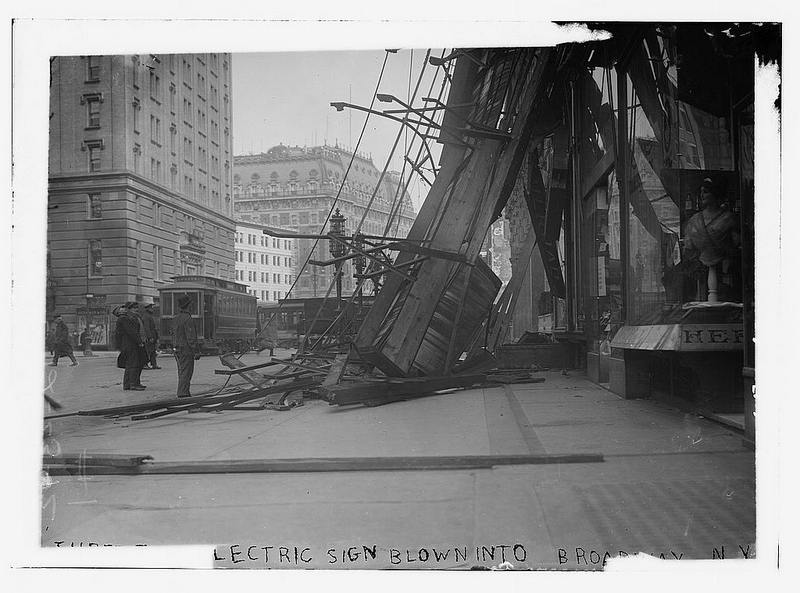
On February 3, 1912, a three-ton electric sign toppled down on Broadway in front of a railroad ticket office and Hepner’s Hair Emporium. According to the New York Times, the sign collapsed after being hit by a 100 mile per hour gust of wind. Luckily, a nearby policeman warned everyone in the store of the impending accident so nobody was hurt.
6. Grand Central Tunnel Train Accident, 1902
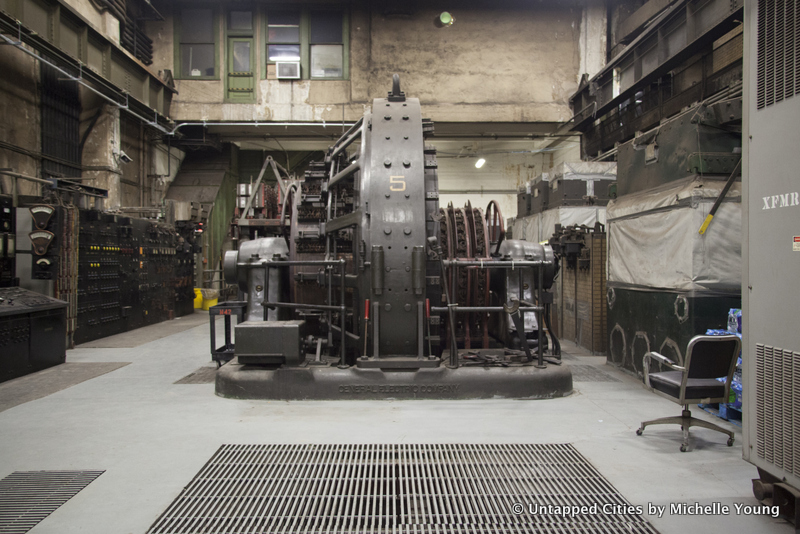
In 1902, a horrific accident in the Park Avenue tunnel in 1902 that would change the technology of train travel in the United States. Steam blocked sight lines in the tunnel out of Grand Central Station (the previous incarnation of the current terminal) and an express train from White Plains and a commuter train collided under 56th Street, becoming the worst train accident in New York City up to that point. Steam trains were banned in Manhattan starting in 1908 and the New York Central set out to find an alternative – which led to the introduction of electric trains. The mythic M42 basement in Grand Central Terminal is a re-outfitting of the former coal plant into an an electric power station.
7. Triangle Shirtwaist Fire, 1911
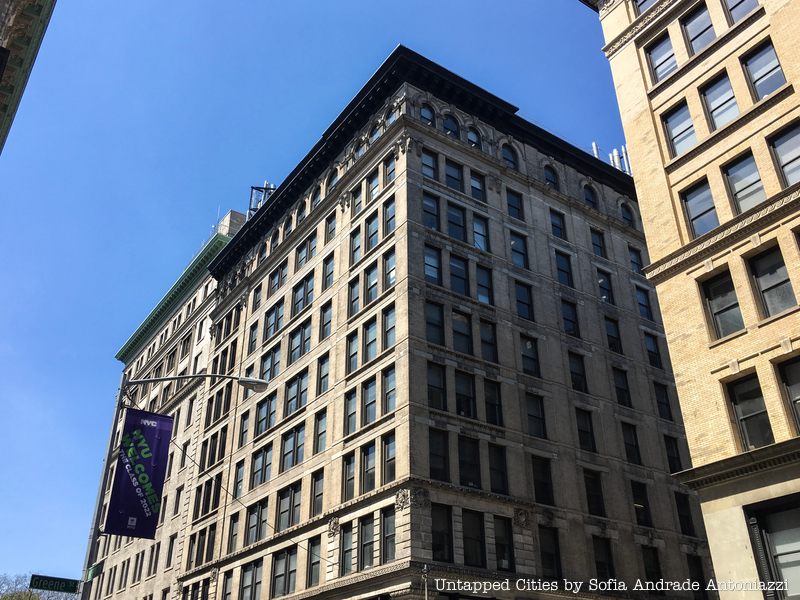
The Triangle Shirtwaist Fire in Greenwich Village in 1911 would be the most deadly workplace disaster in the history of New York City until 9/11, with 146 dead. The building, which still stands, is now NYU’s Brown Building, but in 1911 this was the thick of the city’s garment district. A fire broke out on the top floors, and the workers were trapped because the doors had been locked to prevent them from stealing or taking breaks. The fire department ladder only went up six floors, too low to reach the floors consumed by fire. The elevators could only bring down a dozen at a time, and about 40 women threw themselves out the building. While workplace fires were commonplace, this accident spurred a reform movement across the country.
8. 9th Ave Derailment
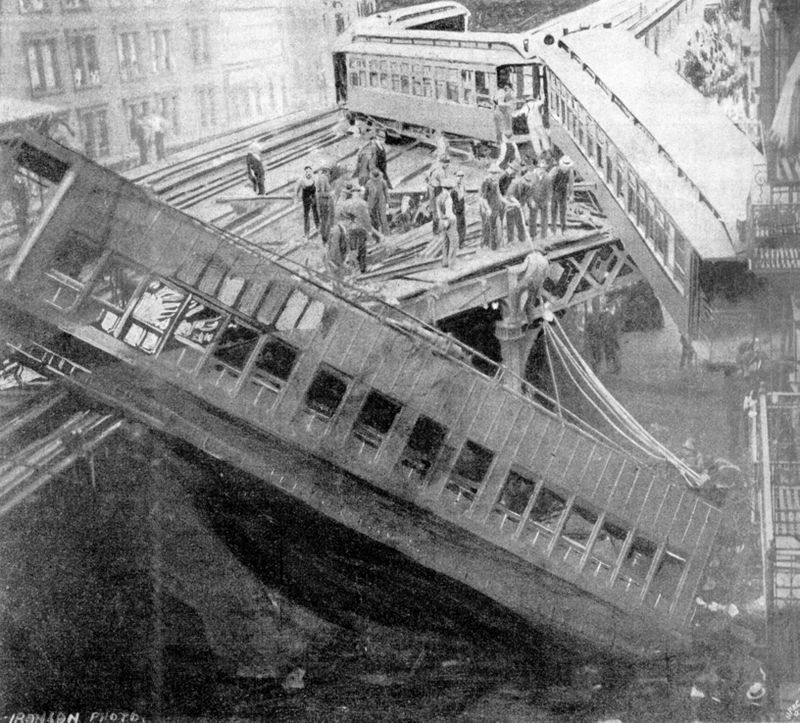
This horrific looking accident took place in 1905, when a 9th Avenue elevated train was mistakenly taken onto an upcoming curve in the track (meant for the Sixth Avenue elevated line) instead of pulling into the 50th Street station. Instead of traveling on the recommended 9 miles per hour for the curve, it was speeding ahead at 30 miles per hour. The second car in the train fell off the track and fell onto the street below. This accident is known as the deadliest one on the city’s elevated rail system, with 13 dead and 48 injured. The motorman jumped town after the accident, was arrested in San Francisco, and put into Sing Sing, from which he escaped in 1909 (but was captured after).
9. Park Avenue Viaduct, 1944
Noted crime and street life photographer, Weegee, took the accident photograph in 1944. During inclement winter weather, a car careened off the upper roadway of the Park Avenue Viaduct that wraps Grand Central Terminal and landed perched over the railing onto the awning below. The photograph was shown in the International Center of Photography exhibit Murder is my Business in 2012.
10. PS General Slocum Accident, 1904
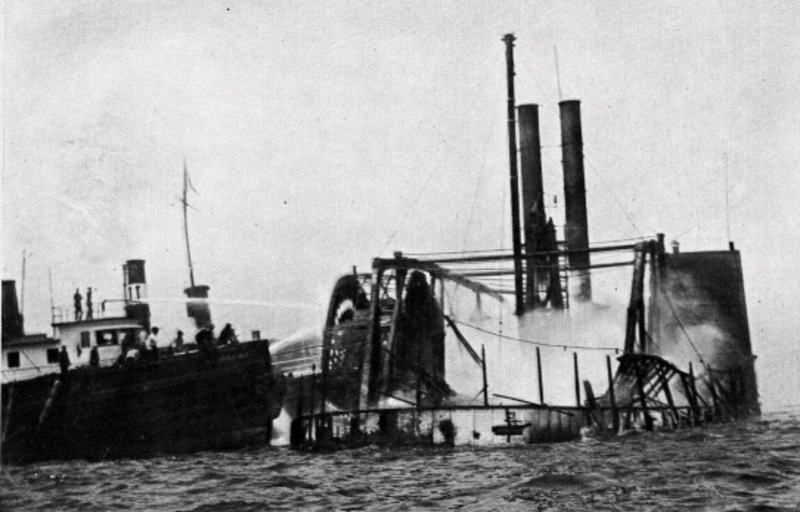
On June 15, 1904, over 1,300 passengers boarded the General Slocum for a Sunday church picnic on Long Island. The outing turned into a tragedy when the steamship caught fire shortly after it set sail. In less than 15 minutes, the ship burned and sank just off North Brother Island, killing over 1,000 members of St. Mark’s Evangelical Lutheran Church. The origin of the fire is unknown, but it’s thought to have been a discarded cigarette or match. The event was the deadliest naval tragedy until the Titanic, and the deadliest disaster in New York City until September 11th. The huge death toll also contributed to the decline of New York’s Little Germany community.
Bonus: Hindenburg Crash, 1937
This event did not take place in New York City, but is worthy of mention for the region. In 1937, the German blimp, the Hindenburg was the world’s largest airship and in the lead up to World War II, a Nazi vehicle for nationalistic pride. It made it across the Atlantic Ocean from Frankfurt to New Jersey, only to explode upon landing killing 35 people. The arrival was meant to be a news event, explaining the wealth of photographs and video footage of the event. Incredibly, there were survivors, though significant injuries were reported.
Next, check out 6 of NYC’s famous shipwrecks.





